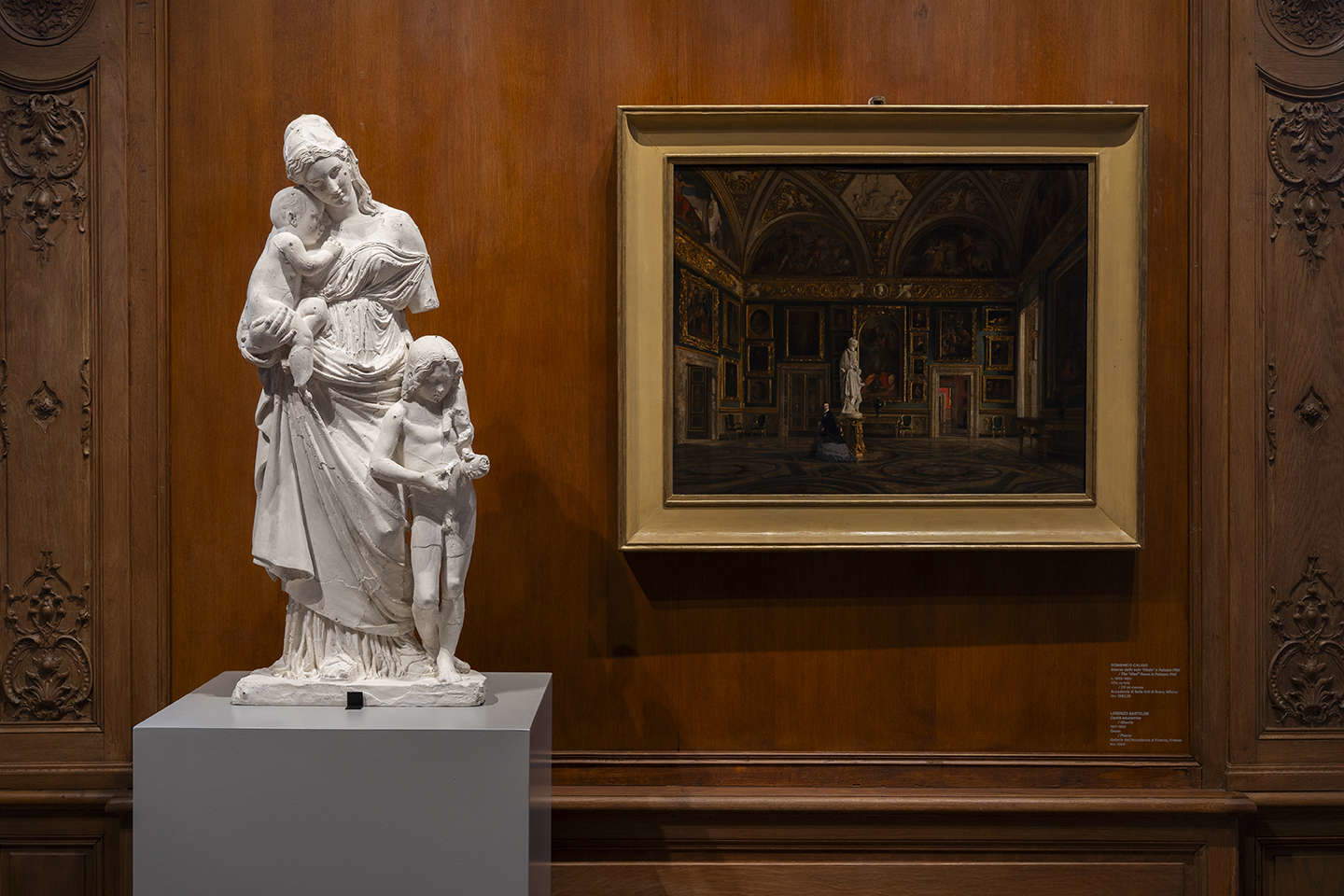From September 25, 2024 to February 16, 2025, the exhibition Il volto e l’allegoria opens at the Luigi Rovati Foundation in Milan. Sculptures by Lorenzo Bartolini, curated by Carlo Sisi. In the works on display, Lorenzo Bartolini (Savignano, 1777 - Florence, 1850) expresses the Romantic experience of Italian purism (first half of the 19th century), of which he was among the major protagonists. Two themes are at the center:allegory and the portrait. The exhibition is sponsored by the Region of Lombardy. The exhibition opens on the main floor with the marble sculpture La Carità educatrice, in the version created in 1846.
The original work was commissioned to Bartolini by Grand Duke Ferdinand III of Tuscany in 1817. The sculpture depicts, between naturalism and allegory, the dual figure of a woman who “detaches” herself from her natural beauty to become a mother educator of her children, according to the civil dictate of that historical period linked to the Restoration. The lock of hair that falls free on her face is the allegorical key to this slippage: freed from the composed hair, it leaves room for the maternal identity in its entirety. In the Arms Room, the complexity of the artist’s creative journey is reconstructed, moving from model form to plaster prototypes to the work. The white space hosts the representation of the second centrality: the face, which reconstructs Bartolini’s great research and sensitivity in linking natural beauty with the existential beauty of the portrayed faces, the result of the research also of the psychological physiognomy of what he sculpts. The synthesis relationship between natural and ideal here becomes the relationship between natural beauty and cultural transformation. Rendition becomes in Bartolini’s poetics its own specific aesthetic, autonomous in generating lines and forms, and a way of witnessing, through the reconstruction of a fashion, the “secularized” part of social culture. The world of the mother is combined with the aesthetics of the woman and, in the synthesis of the light and graceful sculptures, becomes even more powerful. The exhibition is accompanied by the catalog published by the Luigi Rovati Foundation, on sale in the museum shop and online.
“Bartolini’s exhibition opens up in our museum’s narrative of art, from archaeology to the contemporary, a new look: the nineteenth century,” says Giovanna Forlanelli, president of the Luigi Rovati Foundation
“Two sculptures by Lorenzo Bartolini that have recently come to the attention of the public and scholars, have suggested setting up around them an exhibition that touches on two themes, the face and allegory, exquisitely romantic but at the same time akin in various aspects to those of contemporary art that are the subject of the trajectories, between archaeology and contemporaneity, proposed by the Luigi Rovati Foundation,” comments Carlo Sisi, curator of the exhibition.
Lorenzo Bartolini was born in Savignano, near Prato, in 1777. After a period of apprenticeship in workshops where he worked in alabaster and practiced in ornamental drawings, he left for Paris in 1799 where he attended David’s atelier and became friends with Ingres. Contact with French art and important Napoleonic commissions would help increase his prestige, which, in 1807, would earn the artist an appointment as professor at the Carrara Academy, becoming one of the Bonaparte family’s official sculptors. During the Restoration years, Bartolini received important commissions from the Lorraines, such as the Charity Educator for the chapel of Poggio Imperiale in Florence, and from prestigious patrons such as the Demidovs or Countess Rosa Trivulzio Poldi, for whom he sculpted the Trust in God. Also sought after by foreigners-English, Russian, Spanish-for his skill as a portrait painter, in 1839 he was appointed master of sculpture at the Accademia di Belle Arti in Florence, where he had the opportunity to apply, also in the field of didactics, the principles of purist aesthetics and innovations centered on ’relative beauty’ and a devotion to the natural that would characterize his works until his death in Florence in 1850.
Hours: Open Wednesday through Sunday, 10 a.m.-8 p.m. (last admission 7 p.m.). Closed Mondays and Tuesdays, December 24 and 25.
Admission: 16 € Full - 12 € Reduced
 |
| Allegory and the portrait according to Lorenzo Bartolini. The exhibition at the Luigi Rovati Foundation in Milan |
Warning: the translation into English of the original Italian article was created using automatic tools. We undertake to review all articles, but we do not guarantee the total absence of inaccuracies in the translation due to the program. You can find the original by clicking on the ITA button. If you find any mistake,please contact us.